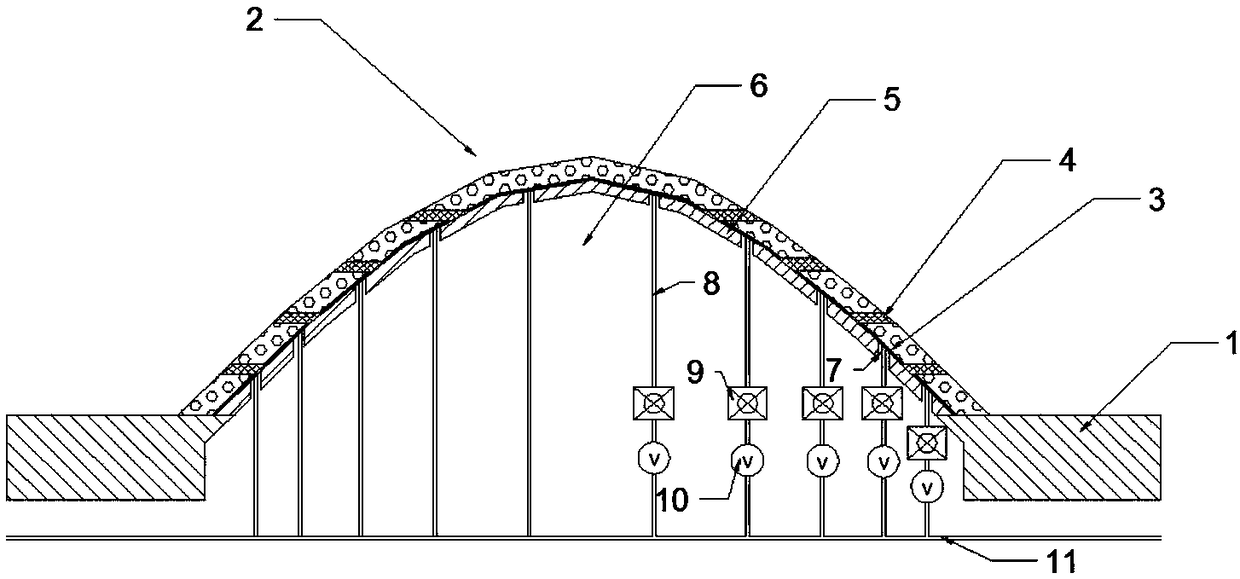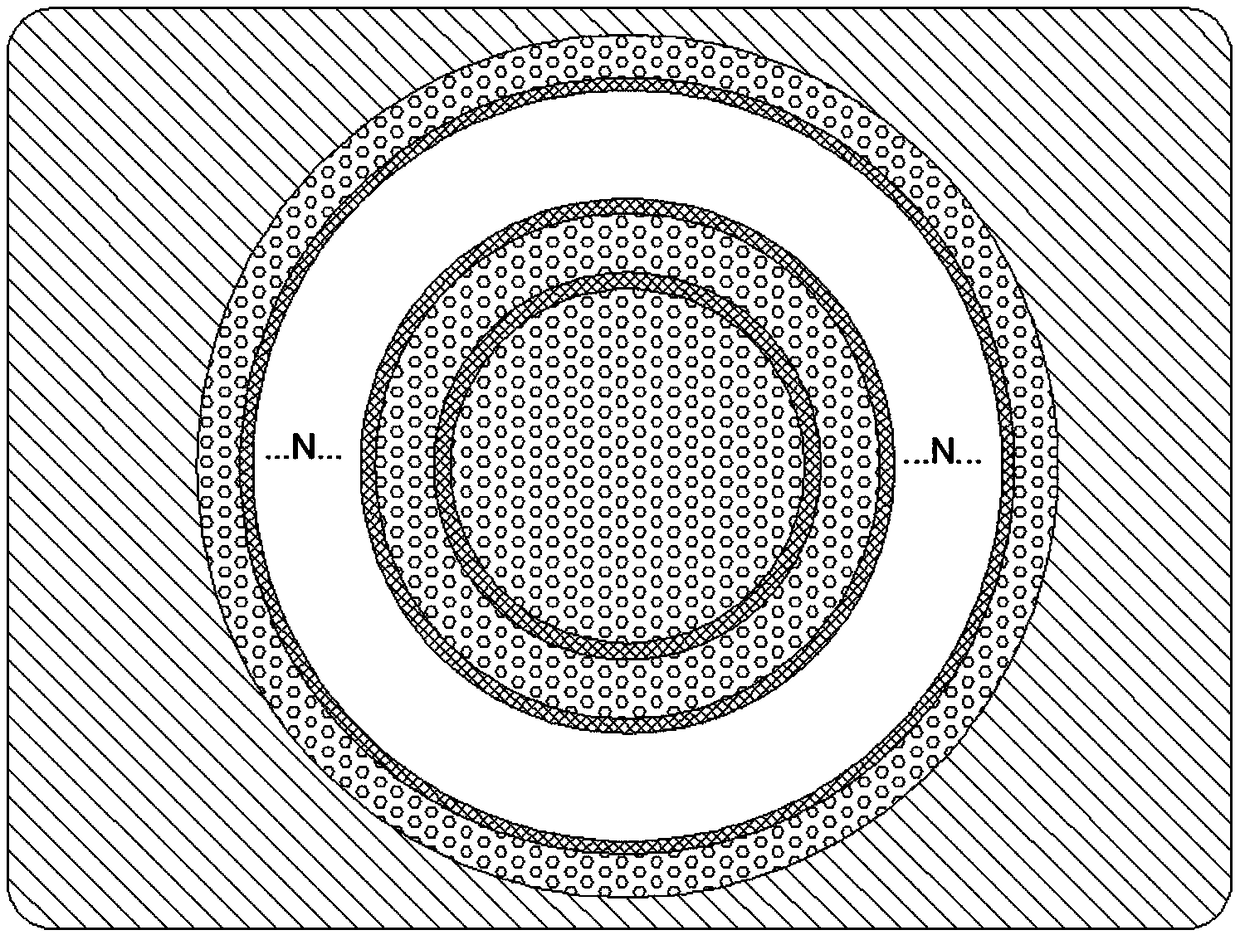A tunable 3D thermal cloak based on multilayer 2D topological materials
A two-dimensional topology, cloak technology, applied in protective clothing, coats, clothing features, etc., can solve the problems of inability to open, thermal stealth function does not have tunability, etc., to save energy, improve computer performance, and huge application value. Effect
- Summary
- Abstract
- Description
- Claims
- Application Information
AI Technical Summary
Problems solved by technology
Method used
Image
Examples
Embodiment 1
[0029] First, an internal support shell 5 is formed on the substrate 1 by a material growth process, as shown in Figure 2(a);
[0030]Then, through the material growth process and masking process, the designed two-dimensional topological material ring layers are superimposed layer by layer on the outer surface of the substrate 1 and the inner support shell 5 from bottom to top to realize N layers of two-dimensional topological material surface covering rings. Layer 2, as shown in Figure 2(b). Among them, the design of the surface ring layer and the internal support shell of the two-dimensional topological material can use algorithms such as finite time domain difference method and finite element method. The metal thin layer patch 3 is processed between the inner ring wall of the N-layer two-dimensional topological material surface covering ring layer 2 and the outer wall of the inner support shell 5 through a coating process.
[0031] Corresponding to each thin metal patch 3,...
PUM
| Property | Measurement | Unit |
|---|---|---|
| width | aaaaa | aaaaa |
| thickness | aaaaa | aaaaa |
| thickness | aaaaa | aaaaa |
Abstract
Description
Claims
Application Information
 Login to View More
Login to View More - R&D
- Intellectual Property
- Life Sciences
- Materials
- Tech Scout
- Unparalleled Data Quality
- Higher Quality Content
- 60% Fewer Hallucinations
Browse by: Latest US Patents, China's latest patents, Technical Efficacy Thesaurus, Application Domain, Technology Topic, Popular Technical Reports.
© 2025 PatSnap. All rights reserved.Legal|Privacy policy|Modern Slavery Act Transparency Statement|Sitemap|About US| Contact US: help@patsnap.com



